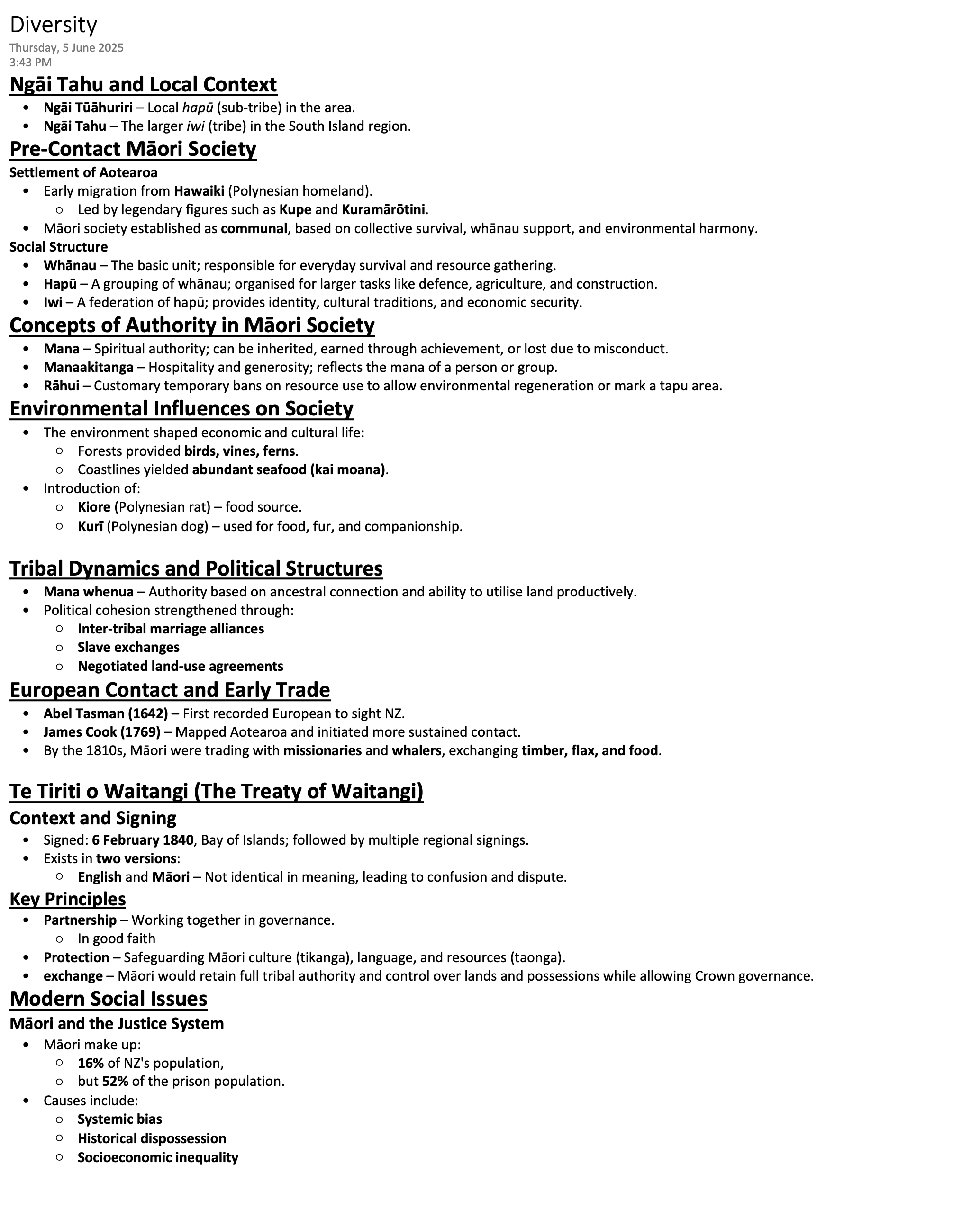Maori principles
Ngāi Tahu and Local Context
Ngāi Tūāhuriri – Local hapū (sub-tribe) in the area.
Ngāi Tahu – The larger iwi (tribe) in the South Island region.
Pre-Contact Māori Society
Settlement of Aotearoa
Early migration from Hawaiki (Polynesian homeland).
Led by legendary figures such as Kupe and Kuramārōtini.
Māori society established as communal, based on collective survival, whānau support, and environmental harmony.
Social Structure
Whānau – The basic unit; responsible for everyday survival and resource gathering.
Hapū – A grouping of whānau; organised for larger tasks like defence, agriculture, and construction.
Iwi – A federation of hapū; provides identity, cultural traditions, and economic security.
Concepts of Authority in Māori Society
Mana – Spiritual authority; can be inherited, earned through achievement, or lost due to misconduct.
Manaakitanga – Hospitality and generosity; reflects the mana of a person or group.
Rāhui – Customary temporary bans on resource use to allow environmental regeneration or mark a tapu area.
Environmental Influences on Society
The environment shaped economic and cultural life:
Forests provided birds, vines, ferns.
Coastlines yielded abundant seafood (kai moana).
Introduction of:
Kiore (Polynesian rat) – food source.
Kurī (Polynesian dog) – used for food, fur, and companionship.
Tribal Dynamics and Political Structures
Mana whenua – Authority based on ancestral connection and ability to utilise land productively.
Political cohesion strengthened through:
Inter-tribal marriage alliances
Slave exchanges
Negotiated land-use agreements
European Contact and Early Trade
Abel Tasman (1642) – First recorded European to sight NZ.
James Cook (1769) – Mapped Aotearoa and initiated more sustained contact.
By the 1810s, Māori were trading with missionaries and whalers, exchanging timber, flax, and food.
Te Tiriti o Waitangi (The Treaty of Waitangi)
Context and Signing
Signed: 6 February 1840, Bay of Islands; followed by multiple regional signings.
Exists in two versions:
English and Māori – Not identical in meaning, leading to confusion and dispute.
Key Principles
Partnership – Working together in governance.
In good faith
Protection – Safeguarding Māori culture (tikanga), language, and resources (taonga).
exchange – Māori would retain full tribal authority and control over lands and possessions while allowing Crown governance.
Modern Social Issues
Māori and the Justice System
Māori make up:
16% of NZ's population,
but 52% of the prison population.
Causes include:
Systemic bias
Historical dispossession
Socioeconomic inequality
